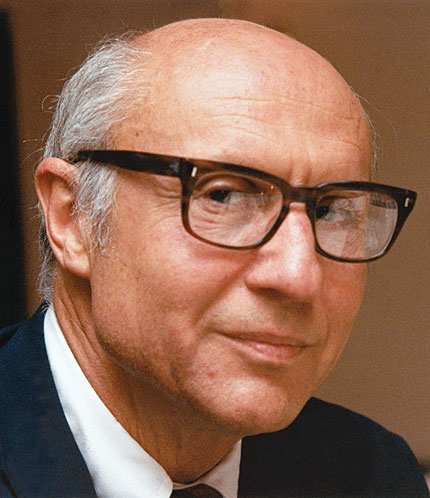Richard George Brewer
DOI: 10.1063/PT.3.1864
Richard George Brewer passed away from cancer on 22 July 2012 in Palo Alto, California. A groundbreaker in the field of nonlinear laser spectroscopy, Dick was noted for his applications of advanced techniques in the study of various laser-induced steady-state and transient phenomena.
Dick was born in Los Angeles on 8 December 1928. He obtained his BS degree in chemistry from Caltech in 1951. His graduate studies at the University of California, Berkeley, were interrupted by military service in 1955–57; following his return to Berkeley, he obtained his PhD in chemistry in 1958 under the supervision of Leo Brewer (no relation). Dick was an instructor at Harvard University and an assistant professor at UCLA before joining the research staff at IBM in Almaden, California, in 1963. He remained there until his retirement in 1994. He became an IBM fellow in 1973 and a consulting professor of applied physics at Stanford University in 1978.
In his early work at IBM, Dick used a ruby laser to demonstrate stimulated Brillouin scattering in liquids. He sought the effect after he doggedly confirmed that no literature reported such behavior. He then studied laser trapping and filamentation in collaboration with the group of Charles Townes. In 1968–69, while working at MIT with Ali Javan’s group, Dick began his career in nonlinear IR spectroscopy and discovered a method he was to exploit in his research at IBM. He observed resonant molecular transitions in naturally abundant 14NH2D molecules by using a standing-wave, carbon dioxide laser to drive and a Stark electric field to tune the transitions. By sweeping the Stark field instead of the laser frequency through resonance, he discovered an extremely narrow Lamb dip in the absorption; the method provided a sensitive tool for high-resolution laser spectroscopy of gases that display Lamb dips.
On returning to IBM, Dick realized he could simulate a pulsed electric field interacting with a molecular electric dipole by using a Stark field to switch the molecular transition frequency into and out of resonance. With that technique he observed photon echoes and explored other optical coherent transient effects, including free induction decay and optical nutation.
With Stig Stenholm, Dick systematically studied the theory of coherent transient spectroscopy in two- and three-level systems, and with one of us (Hahn), Dick worked on special solutions of Bloch-type nuclear magnetic resonance equations. He developed a method to study coherent transient Raman beats: first preparing a coherent superposition of states among degenerate sublevels in a molecule and then suddenly lifting the degeneracy by Stark switching.
Dick realized he could extend the observation of coherent optical transient effects to molecules without a permanent dipole moment by switching the laser frequency instead of the molecular transition frequency, as had been done with the Stark effect. That made it possible to observe optical coherent transients and to separate elastic and inelastic scattering in atoms, molecules, and solids.
Dick and IBM colleague Ralph DeVoe collaborated on several important projects. With Alex Szabo and Stephen Rand, he carried out one of the first experiments in which ultralong optical-coherence lifetimes were observed in solids doped with rare-earth ions. That work led to the discovery of the breakdown of the optical Bloch equations at high field intensities.
Dick and DeVoe also demonstrated sub- and superradiance in the spontaneous emission of two ions as a function of their separation. By using nanofabrication techniques, the two researchers were able to position ions at varying distances on the order of a transition wavelength and observe an oscillation of the decay rate as a function of separation.
Among Dick’s many awards and honors were the 1979 Albert A. Michelson Medal of the Franklin Institute, the 1994 Caltech Distinguished Alumni Award, and the 2000 Charles Hard Townes Award of the Optical Society. In 1997 at Caltech, Dick endowed the Brewer Prize, which is awarded annually to a freshman who demonstrates outstanding intellectual promise and creativity. With Aram Mooradian, Dick organized the first International Conference on Laser Spectroscopy, a series that continues to be held in venues worldwide.
Tragically, Dick’s work was cut short by the progression of a debilitating neurological disease that was first diagnosed in the early 1980s. For someone who loved to travel, hike, and explore the outdoors, the disease might have been viewed as a death blow. But Dick’s quick mind, curiosity, love of learning, interest in people, and sense of humor were immune from the attack on his body. Throughout his career Dick had an unusual tenacity for pursuing projects and doing what he enjoyed, no matter the roadblocks, and despite his illness he continued to keep abreast of developments in physics, perfect his Italian, and offer reminiscences about his colleagues.

Richard George Brewer
IBM CORPORATION

More about the Authors
Paul Berman. University of Michigan, Ann Arbor.
Erwin Hahn. University of California, Berkeley .
